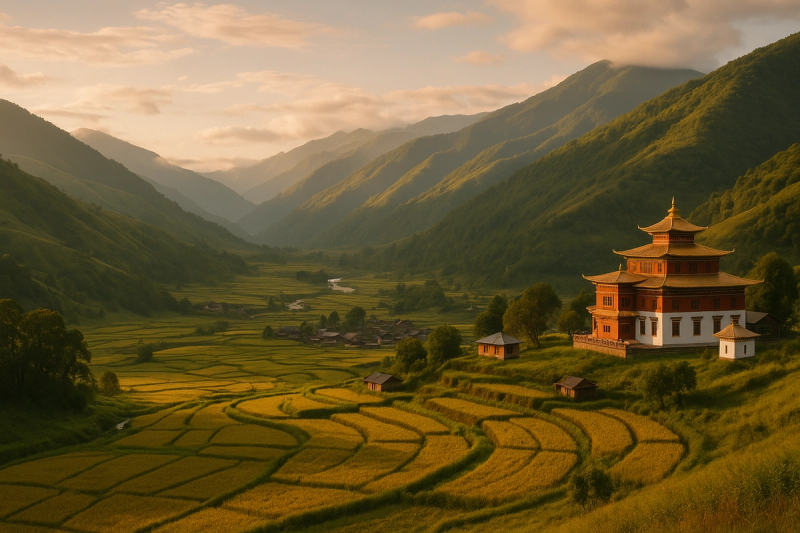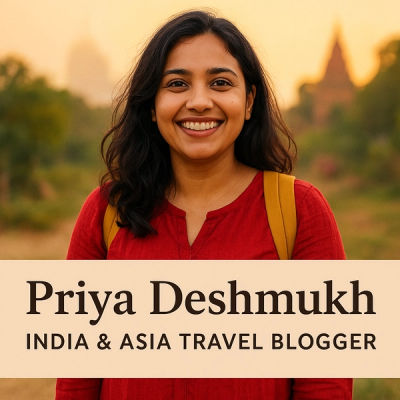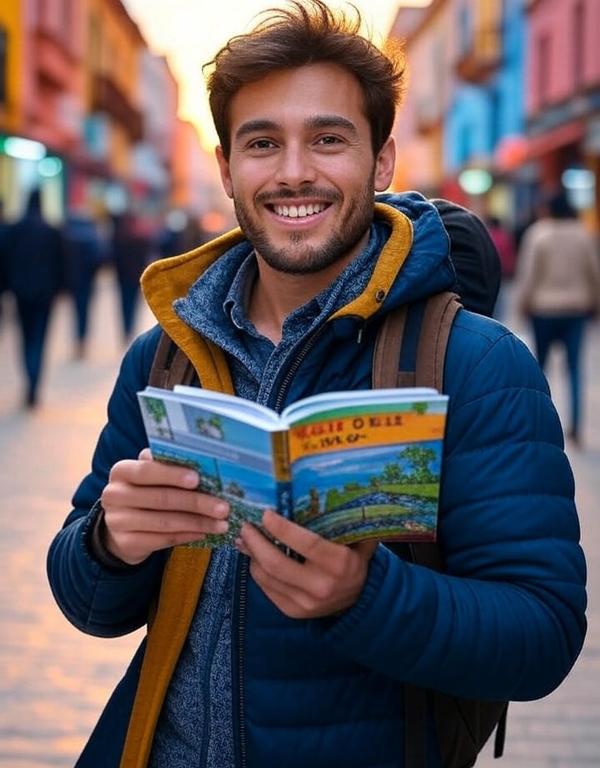Best Seven Sisters Treks 2025: Dzukou, Mechuka and More — the stuff I actually walked, slipped, ate, loved#
So, um, I finally did it. Packed a slightly torn rucksack, two pairs of socks (bad decision), and jumped across the Seven Sisters to chase treks I’d been bookmarking since college. I’m mostly a desi traveler, you know — chai in flasks, UPI drama, bargaining for a shared Sumo seat that my knees will regret later. This post is for anyone who wants those real, boots-on-mud vibes for Dzukou, Mechuka and a few more trails that honestly surprised me. Not a glossy brochure. Some things are rough around the edges, and that’s kinda the charm. I’ll add the nitty-gritty — permits, safety updates, best months, budgets — plus the little joys like the smell of smoked pork or the way the sky looks in Tawang after a hailstorm. If you’re planning now or next year, you’re sorted. Two lines about 2025, then done, promise.¶
Quick travel basics you should know right now (for the Northeast, not just one trek)#
Permits: ILP is required for Arunachal, Nagaland, Mizoram and Manipur for Indian citizens (foreigners need PAP in Arunachal). Meghalaya, Assam, Tripura — no ILP. Most ILPs can be applied online or at entry points; keep soft+hard copies. Safety and current vibes: roads improve every season thanks to BRO, but monsoon landslides are still a thing (June to Sept). Manipur still has sporadic tensions — if you’re thinking Ukhrul or Senapati side, check state advisories, avoid night travel, stay with reputable homestays that know the local situation. Network & money: Jio works fine in towns like Kohima, Shillong, Tawang, Aizawl; in Mechuka it’s patchy. BSNL holds the fort in some valleys. UPI is mainstream in cities, but carry cash in smaller notes for villages and entry gates. Shared Sumo taxis leave early morning and get full fast; book the previous day. Weather swings like mood.¶
- Get ILP before you arrive (Nagaland, Arunachal, Mizoram, Manipur). Print it. Guards at check-posts are nice but strict.
- Best months generally: Oct–Nov for clear skies; March–May for blooms (Dzukou lilies June–July but leeches, yaar); Dec–Feb cold but magical in Tawang.
- Average homestay: ₹800–₹2,000 per person/night with meals in most towns; in very remote places, expect ₹1,200–₹2,500. Basic, warm, family run.
- Guides: ₹1,500–₹3,000 per day common for day hikes. Multi-day wilderness (Bailey Trail, Namdapha) goes higher; negotiate clearly, don’t underpay.
Dzukou Valley Trek, Nagaland/Manipur — that green amphitheatre that broke my phone’s gallery#
I started from Kohima, because honestly the Nagaland side felt steadier at the time. Early morning Sumo to Viswema, hopped out at the trailhead. There’s also the Jakhama route — steeper start, nicer views, will make your calves cry a little. From Viswema, a forest section leads to stone steps, then suddenly the valley opens and it’s like someone ironed the earth flat into rolling green waves. I reached the rest house around noon, dumped my bag, ran to the nearest stream like a kid. June–July is lily season (Dzukou lily, pinkish, delicate), but monsoon means leeches and slippery boards — I had salt and a whole comedy show happening on my ankles. October was perfect when I went again — crisp air, golden grasses, minimal fog. Night temps dip, but the sunrise over the valley? Haan, worth the numb fingers.¶
- Trail time: 3–5 hours one way depending on route and fitness. Viswema smoother, Jakhama steeper.
- Stay: Dzukou rest house dorms are very basic. Carry sleeping bag/liner. Booking is usually on spot; prices change but expect ~₹300–₹600 range. Tents rentable sometimes.
- Fees: There’s a valley entry/maintenance fee (₹100–₹200 ballpark), and sometimes an extra camera fee. Carry cash.
- Food: Kohima pre/after trek — smoked pork with bamboo shoot, axone chutney, rice beer (ask respectfully), and the best ginger tea at tiny stalls. On the trail: Maggi, biscuits, refill water from streams (use filter tablets if you can).
Mechuka, Arunachal — ridge walks, old monasteries, wooden bridges over the Yargyap Chu#
Mechuka is not just pretty, it’s peaceful in that quiet, village-bell way. I flew into Dibrugarh, then it’s a long, beautiful drive via Pasighat and Aalo (Along). Roads keep improving but expect sections with gravel and those small landslide detours. Shi-Yomi district feels like a painting. I stayed at a homestay run by an auntie who made butter tea that could fix any bad day. Day hikes here are flexible: Samten Yongcha Monastery ridge, Dorjeeling viewpoint, and those creaking wooden bridges that make you focus on every step like a meditation. If you’ve energy, ask a local guide for the longer ridge that loops back to town — winds are sharp, views dizzy. The Gurudwara with Guru Nanak’s story adds this beautiful interfaith layer. Evenings? Stars, yaar. Like someone spilled diamonds.¶
- Permits: ILP for Arunachal. Foreigners need PAP. Keep photocopies for check-posts.
- Stay & cost: Homestays ₹1,200–₹2,500 per person/night with meals (dal, local greens, pork if you eat). Limited rooms, book ahead during busy weeks.
- Guides & logistics: ₹2,000–₹3,000 per day fair for ridge hikes. Ask for routes like Samten Yongcha, Dorjeeling. Start early — weather flips after noon.
- Eat: Thenthuk, momos, butter tea, yak cheese sometimes, apong (rice beer) if offered. Pay respect to local customs — modest clothing, no loud drones near monasteries.
Meghalaya: David Scott Trail and Nongriat’s living root bridges — soft knees, big grins#
I did the David Scott trail from Mawphlang to Lad Mawphlang. It’s a historic mule track — 16–17 km of rolling meadows, stone paths, streams where you’ll debate taking shoes off. Took 5–6 hours at a chill pace with photo breaks every five minutes because Meghalaya just shows off. Nongriat is the other world — endless stairs (1,500+), humidity, and then that Double-Decker Living Root Bridge that feels like something elves built. This trek is short but intense because stairs are unforgiving. Stay in homestays in Nongriat, wake up to river sounds, eat jadoh and black sesame chutney, and please please don’t leave plastic behind. Shillong base is easy, but I prefer Sohra because you feel closer to the hills.¶
- Best time: Oct–April for both trails. Monsoon makes root bridges insanely lush but slippery, and some bridges may be closed after heavy rains.
- Costs: Entry fees ₹50–₹100 at bridges, homestays ₹800–₹1,500 in Nongriat, guide ₹1,500–₹2,000 day. Shared taxis (Sumo) from Shillong/Sohra are economical.
- Food: Khasi jadoh, dohneiiong (pork with black sesame), tungrymbai (fermented soy). Try rice cakes at tiny stalls; carry ORS for the stairs.
Tawang & the Bailey Trail vibe — high-alt, prayer flags, and that snow that stings but you’ll smile anyway#
Okay so, not everyone does the full Bailey Trail (historic Bomdila–Tawang route over old passes). It’s multi-day, remote, needs solid logistics and acclimatization. I did a shorter combo: Dirang base, hikes around Sangti Valley, then pushed towards high passes near Sela, and walked day trails around Tawang’s lakes. In winter, the light over Chaksam Valley is gold. Monpa culture is warm; they’ll insist you eat more than you can, and you’ll say yes because the thukpa hits different in the cold. For anyone eyeing longer high-alt treks here — get a local operator, plan permits, and give your body 36–48 hours to acclimatize on arrival. Headaches aren’t bravado; they’re warnings. Also, monks chant at dawn at Tawang Gompa and it kinda re-wires your brain. In a good way.¶
- Permits & planning: ILP for Arunachal. For Bailey Trail and certain wildlife zones, additional permissions and registered guides are common. Start early, carry fleece, down, and solid rain shell.
- Season: Oct–Nov clear, Dec–Feb snow (roads may shut temporarily), March–May bloom. Avoid peak monsoon for landslides.
- Costs: Day hikes guide ₹2,000–₹3,000; multi-day Bailey logistics can be ₹20,000–₹45,000+ depending on duration, porters, food.
Namdapha National Park — Miao to the deep green, where leeches run faster than you (not kidding)#
Namdapha is the Northeast’s wild heart. I entered via Miao, sorted permits at the forest office. There’s a classic multi-day route toward Vijoynagar that’s talk-of-the-tribe among trekkers — super remote, long, needs strong prep, and ongoing road works sometimes change access rules. I did a shorter rainforest trek with a local guide and porter because you can’t be a hero here alone. Leeches? Carry salt, leech socks, and don’t stop in damp gullies too long. It’s thick jungle — hornbills, butterflies the size of my palm, and the sound of rain on big leaves which feels like drums. Mobile network: basically no. Safety: stay on trail, respect wildlife zones, inform forest office and homestay of your plan. Best months are post-monsoon till early winter. Honestly, if you haven’t done a deep jungle trek, start with a day or two and build up.¶
Mizoram & Tripura — Blue Mountain, Reiek, Jampui Hills, and oranges sweet like first crush#
Mizoram’s Phawngpui (Blue Mountain) is crisp, grassy ridges with insane views — base from Thenzawl or Sangau depending on your plan; permits are straightforward, and people are super polite, very tidy culture. Reiek near Aizawl is great for a half-day trek with cliff views and clean picnic spots. In Tripura, Betlingchhip (Jampui Hills) gives sunrise panoramas, and the orange season is a whole mood — warm homestays, hill markets, stories from local uncles who remember when buses were simpler. Both states don’t need ILP, roads are improving, and homestays cost around ₹800–₹1,500. Travel is easier via Agartala and Aizawl airports; shared cabs and buses run early. Not crowded like more famous trails, so carry snacks, cash, and don’t expect fancy cafes — it’s beautiful precisely because it’s not overdone.¶
Assam isn’t just tea estates — Dima Hasao, Garbhanga, Chandubi trails for easy weekends#
Quick shout: Dima Hasao district has gentle day treks near Haflong with lake views and crisp mornings. Garbhanga Reserve Forest just outside Guwahati is surprisingly nice for birding walks; Chandubi lake trails are chilled and end with fish fry that’ll make you late for the ride back. These are great “starter” treks or rest days between the big ones. No ILP, UPI mostly works, and buses are frequent. Bonus: roadside chai here hits different — cardamom heavy, sweet enough to power a 10 km walk.¶
Local culture, safety, and doing it right (so people actually want you back)#
Dress modest especially in villages and religious sites, ask before photos, and don’t fly drones near monasteries or root bridges without permission. Homestays are family homes — be on time for meals, offer to help put plates, it matters. Alcohol: fine in many places but don’t be loud, na? Tensions in Manipur can spike, so check advisories, stick to known routes, and don’t post geo-tagged sensitive spots on social. Rain makes roads naughty — avoid late-night hill drives, use seatbelts in Sumos even if the belt smells a little like old dust. If a local says “today not safe for that trail,” listen. They want you to leave with good stories, not drama.¶
Where to stay and what it costs (rough but practical ranges from my notes)#
Kohima: budget stays ₹1,000–₹2,000 for twin rooms; homestays ₹800–₹1,500 per person with dinner. Mechuka: mostly homestays, ₹1,200–₹2,500 per person including two meals; rooms limited. Shillong/Sohra: hostels ₹600–₹1,200 bunks, mid hotels ₹2,500–₹4,500. Tawang/Dirang: ₹1,200–₹3,000 rooms; winter heating extra sometimes. Namdapha/Miao: very basic guest houses ₹800–₹1,500, plus guide/porter fees. Mizoram/Tripura: ₹800–₹1,500 homestays; city hotels ₹2,000–₹3,500. Food costs vary — local thali ₹120–₹200, café meals ₹200–₹400, special pork dishes ₹250–₹500. Long rides in shared Sumo: ₹300–₹800 per seat depending distance; whole Sumo hire is ₹3,000–₹7,000+ for day trips.¶
Best months to aim for each trek (my feet agree with this)#
- Dzukou Valley: Oct–Nov for clear views; June–July for lilies but slippery and leeches. Dec–Jan cold nights, carry warm layers.
- Mechuka: Oct–April for stable weather; avoid peak monsoon. Winter is photogenic but roads can be tricky.
- David Scott & Nongriat: Oct–April ideal. Monsoon can be epic for waterfalls but go with a guide, watch steps.
- Tawang/High-alt: Oct–Nov clear; Dec–Feb snow (roads may shut), acclimatize properly. March–May mellow and green.
- Namdapha: Nov–Feb for fewer leeches; shoulder seasons okay but rains complicate route plans.
- Mizoram/Tripura: Oct–March comfortable, especially for ridges and sunrises; avoid heavy rains for trail safety.
Gear that saved me (and one thing that didn’t)#
- Trail shoes with grippy soles; no fancy boots needed for Dzukou/Meghalaya, but ankle support helps in slippery bits.
- Rain shell + light fleece. Weather swings quick; layers instead of one thick jacket.
- Headlamp, power bank, and physical map screenshot. Network won’t always help.
- Leech socks or high socks + salt for Namdapha/monsoon Meghalaya. Trust me.
- Reusable bottle + filter tablets. Streams are clean but better safe than sorry.
- Cash ₹3,000–₹6,000 in small notes; UPI fails sometimes. ID copies and permits printed.
- Snacks: chikki, peanuts, ORS, local bananas. The thing that didn’t help: cotton socks… wet forever, regret forever.
Festivals & current happenings that can shape your plan (and hotel prices)#
Hornbill Festival in Nagaland (early Dec) fills Kohima — book stays in advance, prices spike. Ziro Music Festival in Arunachal (usually Sept) turns homestays into mini concert hubs; it’s fun if you like indie music and paddy field vibes. Shirui Lily Festival (Ukhrul, Manipur) happens around May when situation allows; check advisories and local updates before you commit. Mechuka has had adventure fests off and on — mountain biking, paragliding demos — schedule isn’t fixed every year, so confirm dates with local tourism office. Wangala harvest celebrations in Meghalaya (Nov) are beautiful to witness, though not trek-specific, they add color to your plan.¶
Sample budgets (per day or per trek), so you don’t under/overthink it#
Dzukou overnight: ₹2,000–₹4,000 including Kohima stay, transport, entry, simple food. Mechuka 3–4 days: ₹10,000–₹20,000 depending on transport (shared vs hired), homestay meals included, guide for one day. Shillong + David Scott + Nongriat 3 days: ₹8,000–₹15,000 (hostel + shared taxis + guide). Tawang/Dirang 4–5 days: ₹15,000–₹35,000 depending on season, vehicle hire, and how fancy you eat. Namdapha 2–3 days: ₹10,000–₹22,000 with permits, guide, porter, basic stay, transport. Mizoram/Tripura weekend: ₹6,000–₹12,000 including stays and local buses/cabs. These are not perfect numbers — prices fluctuate with fuel, season, availability. But you get the vibe. Always keep a buffer.¶
How to get there without chaos (okay, minimal chaos)#
Fly hubs: Guwahati (connects everywhere), Dibrugarh, Imphal, Aizawl, Agartala, Dimapur. From Guwahati, buses and Sumos to Shillong, Haflong, Tawang side via Tezpur, etc. For Dzukou, reach Kohima (Dimapur flight/train, then road). For Mechuka, Dibrugarh or Pasighat, then long road via Aalo; start early. Shared Sumos leave at 6–8 am, stop for momos and chai, and drive like they’ve done the route for 10 years — because they have. If you get motion-sick, sit front, avoid heavy breakfast. Night drives? If new to hills, don’t. Not worth the anxiety and cows that wander.¶
Eco-respect checklist (because it’s 2024 and we wanna keep these places gorgeous)#
- Carry back all trash. Even “biodegradable” stuff attracts animals. Don’t be that person.
- Stay on trail. Root bridges and alpine meadows are fragile — off-trail damages them.
- Ask before photographing people or prayer areas. Remember privacy and faith matter.
- Use homestays and local guides. Money stays in the community; best stories too.
- No loud music on trails. Share silence, share smiles. You’ll hear birds you didn’t know existed.
So… which seven treks would I call best right now?#
- Dzukou Valley (Nagaland/Manipur) — iconic, moderate, unreal landscapes.
- Mechuka ridge & monastery loops (Arunachal) — serene, cultural, photogenic.
- David Scott Trail (Meghalaya) — historical, easy-moderate, perfect day hike.
- Nongriat living root bridges (Meghalaya) — stair-master, magical bridges.
- High-alt Tawang/Dirang day trails or Bailey sections (Arunachal) — cold, clear, devotional views.
- Namdapha rainforest trek (Arunachal) — advanced jungle, go prepared.
- Phawngpui or Reiek (Mizoram) + Betlingchhip/Jampui (Tripura) — quieter gems, sunrise specialists.
Final thoughts from a muddy-shoed, chai-fueled traveler#
If you want a mountain trip that’s not over-touristed and still feels like you’re discovering something… the Seven Sisters is it. You’ll make small mistakes (like me carrying cotton socks, ugh), you’ll meet homestay families who feed you till your heart is full, and you’ll walk trails where the only noise is wind. Plan permits, respect local advice, and don’t try to cram everything in one shot — it’s not a checklist, it’s a relationship. I’ve written this with fresh notes and slightly sore knees, and yeah, it’ll be useful beyond 2025 too. If you need deeper itineraries or hostel recos, I keep dropping more stuff on AllBlogs.in — ping there, and happy trekking, bhai. Pack light, breathe deep, and let the hills do their thing.¶














